#Rank Organistion
Note
What are the different types of pipe organs, beside mosquito? 👀
Okay I think I accidentally confused you. Mosquito pipes are pipes, not the organ itself. The mosquitoes are just the tiny pipes in a smaller rank (octave set of pipes).
Types of organs? Oh boy that's a can of worms and a half right there.
First off, you've got classic chamber organs. Generally the first type of pipe organ someone thinks of when they are told to think of a pipe organ. Big things that take up entire buildings and have pipes pretty much wherever there's space in the walls. Personally, I believe this is probably where the term "organ" came into use as a term for the instrument because its span through the building led to it quite literally being the organs of the building, but made of pipes. Haven't done much research into the etymology of the phrase, though, so I could very well be wrong about that.
Second, and my personal favorite: theater/cinema organs! They're similar to chamber organs, however these bad boys also have percussion! Also part of the reason I get so so so pissed off when people try to tell me silent film had no sound at all. No they didn't have synchronous sound, however they did have organists! And an entire type of organ invented solely for playing sound effects along with the music (but I'll get to them later). Usually found in theaters, but have since become part of a very niche set of pizza places. Very popular between the 50s-80s. (I really want to learn how to play one some day, and this was actually the type of organ I first got to see in person!) Wurlitzer is the most common brand you'll hear of when talking about these types of organs, however the one I got to play was a Robert Morton. Also! Organ Stop Pizza in Arizona, USA, has a very sizable Wurlitzer with a duck sound on it and a slide whistle and I really wanna go there some day. They have some pretty fun videos on YouTube (I recommend the "Be Our Guest" video). Either way, very cool.
Third: fairground organs! Ever wonder why carnival music sounds Like That? Fairground organs. They were incredibly popular in carnivals and fairs and basically any carousel worth riding had one in the center of it. These organs tend to be built to be not only loud (to be heard over the din of the crowds), but also hella pretty. The facades on these bad boys can get so detailed and extravagant that they could be classified as their own type of art. Because not only are you designing pretty colors and figurines (which of these had moving ones that played other instruments!) you also had the instruments themselves to use to help organize. These things not only provided ambiance and music, they were shows in and of themselves. They were always made to be eye-catching and entertaining. Personal favorite YouTube videos for these are Rasputin and the Can Can (both by Alexey Rom). Two separate organs, but they're both gorgeous creations.
Fourth: crank/barrel/busker organs. Yep! Busking. You can busk with these bad boys. Generally these guys are smaller, maybe 3-5 stops. They're usually on a little cart and are hand-cranked to operate. Not all of these are on carts, though. Some of them are small enough to fit on a tabletop. They tend to operate on barrel music (as opposed to the book music fairground organs tended to operate on) as it's more compact. Personal favorite videos for these are "We'll Meet Again" Raffin Street Organ (Nick Williams) and "Crazy Rhythm" - auf 20er Drehorgel (OrgelbauDrewesChlup). (It's actually 3 songs but shhhhh all three are very pretty and I love this video.)
Fifth: photoplayers! These are the machines I was talking about earlier with the theater organs. These were made specifically to accompany silent film and were huge during the silent film era (1910-1928) but rapidly fell off with the invention of synchronous sound. Most well-known of these was the American Fotoplayer by the American Photo Player Company. If that sounds familiar, it's because recently (I think, I'm not super up-to-date with what's popular on TikTok) a clip from the beginning of an episode of California's Gold took off with Joe Rinaudo and his Fotoplayer. (Hit it, Joe!) (He plays the Twelfth Street Rag, in case you were curious.) These aren't technically classified as organs themselves, instead falling under the grander umbrella term orchestrion, but they do have organs in them! I seriously recommend Joe Rinaudo for any photoplayer songs, specifically Ride of the Valkyries. It's so so so good.
Sixth: calliopes! They're not technically organs too, but they're organ adjacent. They're played using train whistles and steam! They were most popular on steamboats (for obvious reasons) and were usually played when said boats passed closer to towns. However, this doesn't mean they're exclusive to steamboats, as they do have smaller versions that were also found at carnivals. The main part is that they're made of (or similar in sound to) train whistles. Also! The name is pronounced 2 different ways! Callie-ope and cal-lie-o-pee. There's actually a little poem about them that uses both pronunciations: "Proud folk stare after me; Call me Calliope; Tooting joy, tooting hope; I am the Calliope." Personal favorite video for these is Calliope music by burnleyzie cook on YouTube.
Seventh: pyrophones! Yes, pyro. As in fire. These things are so fucking cool. I love them so much. The pipes play fire. They're so rare, however someone apparently made a TikTok of someone playing one, and I reblogged it here at some point. They're also technically not organs, and are actually a close relative of calliopes (the only difference is the combustion. They have inverse combustions from each other and I can never remember which one has internal and which one has external.) (Okay, I just remembered I'm on a computer, I just looked it up. Calliopes are external, pyrophones are internal.) There's actually a fun subset of these that were popular in Paris called "lustre chantant" aka singing chandelier. I literally can't find anything about them anywhere aside from a few magazine clippings from the 1880s-1890s and a small section written in the calliope (music) wiki article. I would love to see one in person, however I genuinely don't think there are any remaining. Any time I try and find anything pertaining to them, I just wind up on videos about the French chandelier industry. Help.
That's honestly all I can remember off the top of my head. Thank you for the ask! I started answering on my phone, but then had to switch to my laptop because I realized I had too much to say. We go hard when it comes to pipe organs/orchestrions.
#heart restart#bunnyfella#ty so much for asking about this i love a good info dump#it's enriching for the guy#you know the guy#i think#i'm not sure if you do know the guy but i'm pretty sure you don#*do
4 notes
·
View notes
Text
Lost Chicago Building 6 - The Granada Theater
By Roger Jones, August 2023

The Granada at night
I only saw a movie at the Granada Theater once, in the late 1970s; I believe the offering was Murder by Death. Nonetheless, I always marveled at the movie palace's facade every time the el train passed the Loyola stop on Chicago's north side.

Granada Theater from the CTA Loyola platform, found photograph, Flickr, probably 1970s

Granada marquee, c. 1930

The grand lobby in 1929
Historical details:
Opened: Tuesday, September 21, 1926
Status: Closed/Demolished Sunday, September 30, 1990
Style: Spanish Baroque
Seats: 3,443
The Granada Theater was a 3,400–seat movie palace located at 6427-41 North Sheridan Road, in the Rogers Park neighborhood of Chicago and adjacent to Loyola University. Constructed in 1926 for the Marks Brothers, major theatre operators in the U.S., Edward E. Eichenbaum was the principal designer for the architectural firm of Levy & Klein. Eichenbaum also designed the Marbro, Regal, and Century theaters in Chicago.
The Marks Brothers operated the theatre until 1934, when Balaban and Katz purchased the property. That firm and its successors—United Paramount Theatres, ABC Great States Theatres and Plitt Theatres—operated the facility until approximately 1978. From then until the mid-eighties, it was used sporadically for rock concerts and presented midnight showings of The Rocky Horror Picture Show for several years.
Despite all attempts to save the theater, Senior Life Styles Corporation purchased the property and demolished it in 1989-90 for a planned apartment/commercial structure.
The new 16–story apartment tower and shopping arcade constructed in 1991 was named "Granada Center.” Loyola University eventually purchased the structure and transformed it into 12 floors of student apartments over a base containing parking, retail and university offices.
Source: Wikipedia
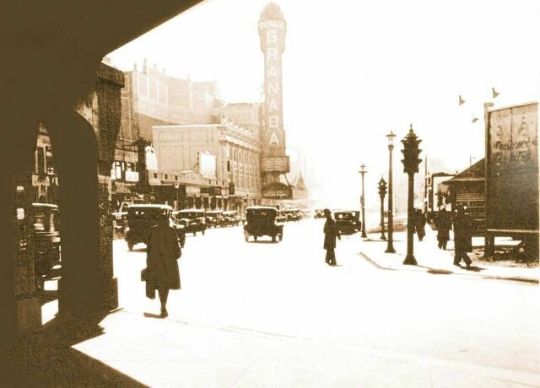
1920s photo, credit John G. Chuckman Collection
Following are scanned pages from The Chicago Movie Palaces of Balaban and Katz, by David Balaban:




Granada Theater under construction
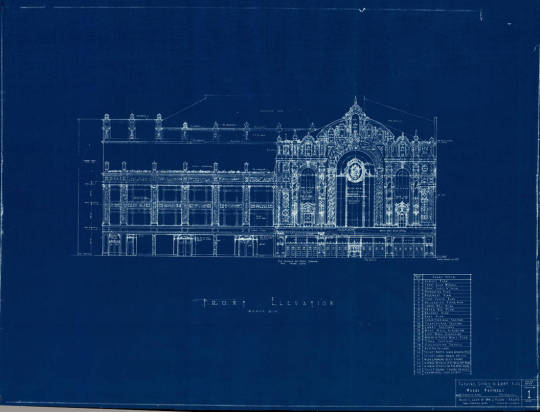
Architectural rendering, front elevation (no date)

Advertisement (no date)
Thanks to Cinema Treasures for the following details:
Built in 1926 for the Marks Brothers circuit, this was one of the largest movie palaces on Chicago’s Far North Side, located in Rogers Park. The Granada Theatre was opened September 18, 1926 with a Jack Haskell stage show “Eastern Nights” and on the screen Belle Bennett in “The Lilly”. The Wurlitzer 4 manual 20 rank theatre organ was opened by organist Alfred F. Brown The proscenium was 60ft wide and the stage 32ft deep. Seating was provided for 3,448, with 1,833 in the orchestra level and 1,615 seats in the balcony.
On November 18, 1932, the theatre was acquired by the Publix/Balaban & Katz chain and it was briefly closed, reopening on July 29, 1933 with John Barrymore in “Reunion In Vienna” & Laurel & Hardy in “Me and My Pal”. The Granada Theatre was originally designed by Edward Eichenbaum (of the firm of Levy & Klein) for both live stage shows and movies, but by the 1940’s, was only showing films. On November 19, 1975 the World Premiere of Jack Nicholson in “One Flew Over the Cuckoo’s Nest” was held at the Granada Theatre, with Jack Nicholson & Louise Fletcher appearing ‘in person’. It remained open as a movie theatre, operated by Plitt Theatres until the late-1970’s.
Information from the HABS Report on the Granada:
The report goes on to say that the primary reasons for the Granada’s historic significance include:
its size, as it was one of the three largest movie theatres ever built in Chicago, the other two being the Uptown and the Chicago theatres;
its elaborate design, often cited as the most ornate in the city;
its place as the flagship of the Marks Brothers empire, who were second only to Balaban and Katz in the construction and operation of opulent movie palaces; and
its association with architect Edward Eichenbaum.
Perhaps the most heartbreaking element of the HABS report is one of its closing statements: “The Granada had survived in essentially unaltered condition until the past two years (1988-89), when it was left unattended and the weather and vandalism were allowed to proceed unchecked.” This was a demolition that could have been avoided.
The HABS report included several dozen photos of the interior and exterior of the Granada Theatre, taken shortly before demolition. While it is depressing to see the damage the theatre suffered in its final two years, especially during a time when movie palaces across the country were being renovated to the benefit of communities large and small, these photos do show in great detail the artistry of Edward Eichenbaum.
Source: Compass Rose Cultural Crossroads
In addition:
...the Granada was still in remarkably good shape as recently as 1987. While it was allowed to deteriorate after that, eyewitnesses to the demolition mourn the fact that there was little wrong with the theatre structurally, that it could, in fact, have been saved.
Despite efforts to landmark the theatre or get it reopened, the Granada’s fate was sealed. Much of the terra cotta of the facade was stripped and sold off, as were many of the interior decorative elements. One of the large chandeliers from the lobby was salvaged and now hangs in the Riviera Theatre. Another, smaller, chandelier hangs in the Music Box on Southport.
Source: Compass Rose Cultural Crossroads
Photographs from the HABS Report, Library of Congress:

VIEW OF BLOCK FROM NORTHWEST LOOKING SOUTHEAST, 1980s, N. Sheridan Road

MAIN LOBBY CEILING FROM GROUND LEVEL
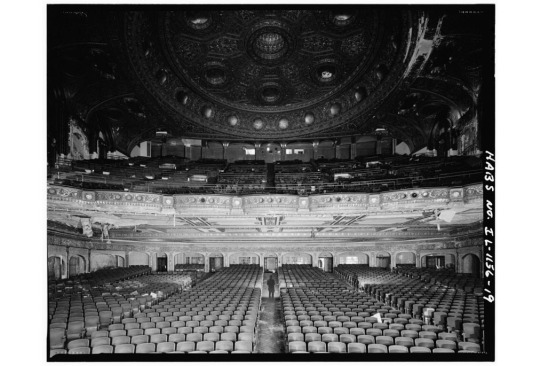
HORIZONTAL VIEW FROM STAGE LOOKING SOUTH

VIEW OF CEILING FROM STAGE

ALCOVE 2ND FLOOR LOBBY WALKWAY, during demolition

LOOKING EAST, VIEW OF COMMERCIAL OFFICE SECTION, NORTH PORTION OF THEATER COMPLEX
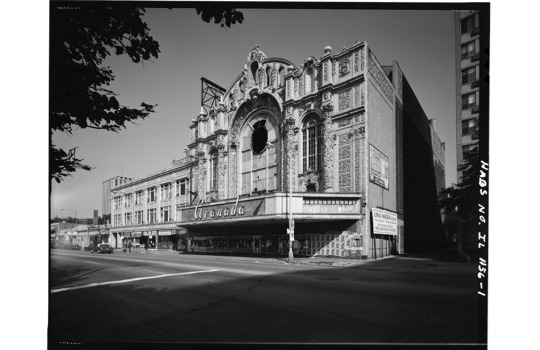
VIEW OF BLOCK FROM SOUTHWEST LOOKING NORTHWEST - during demolition
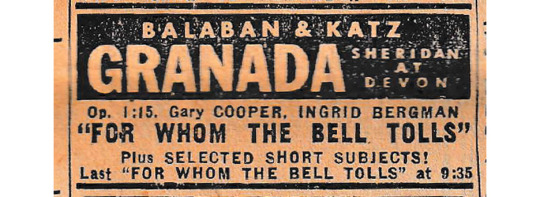
Admission ticket
Photos during the theater's destruction can be viewed in the Flickr set by Genial23 Ruined and abandoned.

A final view: Granada Theater, 1920s - Cinema Treasures, photo by Chicago Architectural Photographing Company
An incredibly detailed description of the building can be found on Historic Structures.
Today:

"Completed in 1991, Granada Center hosts residential apartments, a parking garage, office space for Loyola University, and several store fronts. The Center was built to help aid the growth and development of the Rogers Park neighborhood, as well as to provide more space for Loyola University." Loyola University Chicago Digital Special Collections
Finally, if you're interested in fragments, view the Urban Remains site for some interesting pieces of the Granada Theater.
#Granada Theater#Chicago#movie palace#Balaban and Katz#architecture#terra cotta#Edward E. Eichenbaum#Marks Brothers#cinema#Rogers Park#lost buildings
3 notes
·
View notes
Audio
The story of The Movers began in 1967 when two unknown musicians – the brothers Norman and Oupa Hlongwane – approached Kenneth Siphayi a stylish and wealthy businessman from the Alexandra township to ask if he could buy them musical instruments. In return he would receive a cut from future life shows and record deals. Kenneth, ended up doing much more, becoming their manager, setting them up in a rehearsal space, and introducing them to an organist who would prove to be the missing link in the band’s skeletal sound. He also gave them their name: The Movers … because, as he said, their music was going to move you, whether you liked it or not.
The band exploded onto the country’s racially-segregated music scene at the dawn of the 1970s with a sound that applied the rolling organ grooves and elastic rhythms of American soul to songs that came straight from the heart of the townships. Rumours of the band started to spread throughout the country and soon the record labels were sending their talent scouts to the Alexandra township to hear it for themselves.
The Movers finally signed to Teal Records in 1969, and their first album, Crying Guitar, went on to sell 500,000 copies within the first three months, launching them into the front rank of South African bands. In their first year they went from local sensations to being the first band of black South Africans to have their music cross over to the country’s white radio stations.
Although the first record was entirely instrumental, The Movers started working with different singers soon after – scoring an early hit with 14 year old vocal prodigy Blondie Makhene – and enriched their sonic palette with horns, extra percussion and various keyboards. Their stylistic range also expanded, incorporating elements of Marabi, Mbaqanga, jazz, funk, and reggae into their soul-steeped sound. But the essence of their music came from the almost telepathic connection of its founding members: the simmering organ of Sankie Chounyane, the laid-back guitar lines of Oupa Hlongwane, the energetic bass grooves of Norman Hlongwane and the simmering rhythms of drummer of Sam Thabo.
The band reached their apex in the mid-1970s, and their hit ‘Soweto Inn’, sung by Sophie Thapedi, became inseparable from the student revolts that signalled a new resistance to the apartheid government. In 1976, however, their manager was forced out, and their producer started to play a more active role in the band’s direction. By the end of the decade there were no original members left. But at their height The Movers were titans of South African soul who left a legacy of over a dozen albums and countless singles of pure groove. On The Movers 1970–76, Analog Africa presents 14 of the finest tracks from the band’s undisputed peak.
4 notes
·
View notes
Text
Mabel Garrison flits through a florid parlor waltz like a butterfly
THE SONGBIRD: Mabel Garrison (1886 - 1963) was born in Baltimore. After studying in Maryland and New York, she made her debut in 1912 as Philine with the touring Aborn Opera Company. Her Met debut followed soon in 1914 in a gala concert, with her first stage role being Frasquita. She rose in the ranks to leading coloratura roles including Adina, Gilda, Olympia, Queen of the Night, Queen of Shemakha, Rosina, and Lucia (her final performance there in 1921). She made guest appearances in Berlin, Cologne, and Chicago, as well as touring the U.S. in concerts and recitals. Garrison is remembered as a skilled technician due to her many well-regarded recordings of classical arias and popular legit "cross-over" songs such as this selection.
THE MUSIC: Annie Andros Hawley (1872 - 1956) was born in Massachusetts into a prominent New England family with musical bonafides: her father was the choirmaster of St. Peter's Episcopal Church in Cambridge and her mother was the organist there. Annie played cello in a women's orchestra, possessed a trained soprano voice, and wrote comic operettas and art songs. The song "Gay Butterfly" from 1908 is subtitled "The Farrar Waltz Song," which I presume means it was written for, or made famous by, superstar soprano Geraldine Farrar (also from Massachusetts), but I can't find any further details to confirm it.
#classical music#opera#music history#bel canto#composer#classical composer#aria#classical studies#maestro#chest voice#Mabel Garrison#coloratura soprano#soprano#Metropolitan Opera#Met#Gay Butterfly#The Farrar Waltz Song#Annie Andros Hawley#classical musician#classical musicians#classical history#history of music#historian of music#musician#musicians#diva#prima donna#opera history
1 note
·
View note
Text
On this day in Wikipedia: Sunday, 3rd March
Welcome, velkomin, willkommen, fáilte 🤗
What does @Wikipedia say about 3rd March through the years 🏛️📜🗓️?

3rd March 2023 🗓️ : Death - Kenzaburō Ōe
Kenzaburō Ōe, Japanese novelist, 1994 Nobel Prize laureate in Literature (b. 1935)
"Kenzaburō Ōe (大江 健三郎, Ōe Kenzaburō, 31 January 1935 – 3 March 2023) was a Japanese writer and a major figure in contemporary Japanese literature. His novels, short stories and essays, strongly influenced by French and American literature and literary theory, deal with political, social and..."

Image licensed under CC BY-SA 3.0? by Thesupermat
3rd March 2019 🗓️ : Death - Peter Hurford
Peter Hurford OBE, British organist and composer (b. 1930)
"Peter John Hurford OBE (22 November 1930 – 3 March 2019) was a British organist and composer...."
3rd March 2014 🗓️ : Death - William Pogue
William R. Pogue, American colonel, pilot, and astronaut (b. 1930)
"William Reid "Bill" Pogue (January 23, 1930 – March 3, 2014) was an American astronaut and pilot who served in the United States Air Force (USAF) as a fighter pilot and test pilot, and reached the rank of colonel. He was also a teacher, public speaker and author. Born and educated in Oklahoma, Pogue..."

Image by NASA
3rd March 1974 🗓️ : Event - Turkish Airlines Flight 981
Turkish Airlines Flight 981 crashes at Ermenonville near Paris, France killing all 346 aboard.
"Turkish Airlines Flight 981 (TK981/THY981) was a scheduled flight from Istanbul Yeşilköy Airport to London Heathrow Airport, with an intermediate stop at Orly Airport in Paris. On 3 March 1974, the McDonnell Douglas DC-10 operating the flight crashed into the Ermenonville Forest, (23.46 mi) (37.76..."

Image licensed under GFDL 1.2? by
Steve Fitzgerald
3rd March 1924 🗓️ : Event - Ottoman Caliphate
The Ottoman Caliphate, the world's last widely recognized caliphate, was abolished.
"The caliphate of the Ottoman Empire (Ottoman Turkish: خلافت مقامى, romanized: hilâfet makamı, lit. 'office of the caliphate') was the claim of the heads of the Turkish Ottoman dynasty to be the caliphs of Islam in the late medieval and early modern era. During the period of Ottoman expansion,..."

Image by TRAJAN 117
3rd March 1820 🗓️ : Event - United States Congress
The U.S. Congress passed the Missouri Compromise, which balanced the admission of Missouri as a slave state with that of Maine as a free state.
"The United States Congress is the legislature of the federal government of the United States. It is bicameral, composed of a lower body, the House of Representatives, and an upper body, the Senate. It meets in the U.S. Capitol in Washington, D.C. Senators and representatives are chosen through..."

Image by Ipankonin
3rd March 🗓️ : Holiday - Christian feast day: Winwaloe
"Winwaloe (Breton: Gwenole; French: Guénolé; Latin: Winwallus or Winwalœus; c. 460 – 3 March 532) was the founder and first abbot of Landévennec Abbey (literally "Lann of Venec"), also known as the Monastery of Winwaloe. It was just south of Brest in Brittany, now part of France. ..."

Image by Abgrall Jean-Marie (1846-1926)
0 notes
Text
De heer Tissink en de heer Van der Werf zijn benoemd tot Lid in de Orde van Oranje-Nassau. Dit gebeurde tijdens het 30-jarig jubileum van Stichting IJsseldijkkerkconcerten. Beide heren hebben zich gedurende vele jaren onvermoeibaar ingezet als medeoprichters van de stichting. Hun toewijding heeft ervoor gezorgd dat Stichting IJsseldijkkerkconcerten prachtige klassieke muziekervaringen kan bieden aan de Krimpense samenleving.
De heer Van der Werf: organisator van de concertavonden
De heer Van der Werf verzorgde als secretaris de notulen, de website, de programmering en de PR van de stichting. Daarnaast organiseerde hij mede de terugkerende concertavonden. Naast zijn inzet voor Stichting IJsseldijkkerkconcerten is hij ook organist bij de Protestante Gemeente.
De heer Tissink: penningmeester met veel precisie
Als penningmeester heeft de heer Tissink de financiële middelen van de stichting met veel nauwkeurigheid beheerd. Ook hij was de medeorganisator van de concertavonden. Daarnaast is de heer Tissink vrijwillig actief als voorzitter van de Algemene Kerkenraad van de PKN. Ook is hij scriba geweest voor het Classis Zuid-Holland Zuid en de wijkgemeente De Rank.
0 notes
Text
Chapter 4: Kor
The old man is a Kor, one of Verloren's Demonic Messengers. He's doing a no-no.

At the correction center, a bunch of men have been admitted because they are apparently addicted to something...
But fuck it, back to the fight. Kor tries to tempt Teito again, reminding him he's a fugitive and that a wish would be pretty useful right now but Frau reminds Kor that they are in the church which holds the Law of Sanctuary: it would apparently drop him a whole rank if he breaks the rules. Kor retorts that Teito has more worth than Frau knows and if he takes him back, his master will be pleased with him. Frau says fuck off and besides, wouldn't his master want the big ass scythe he just pulled out of his ass?
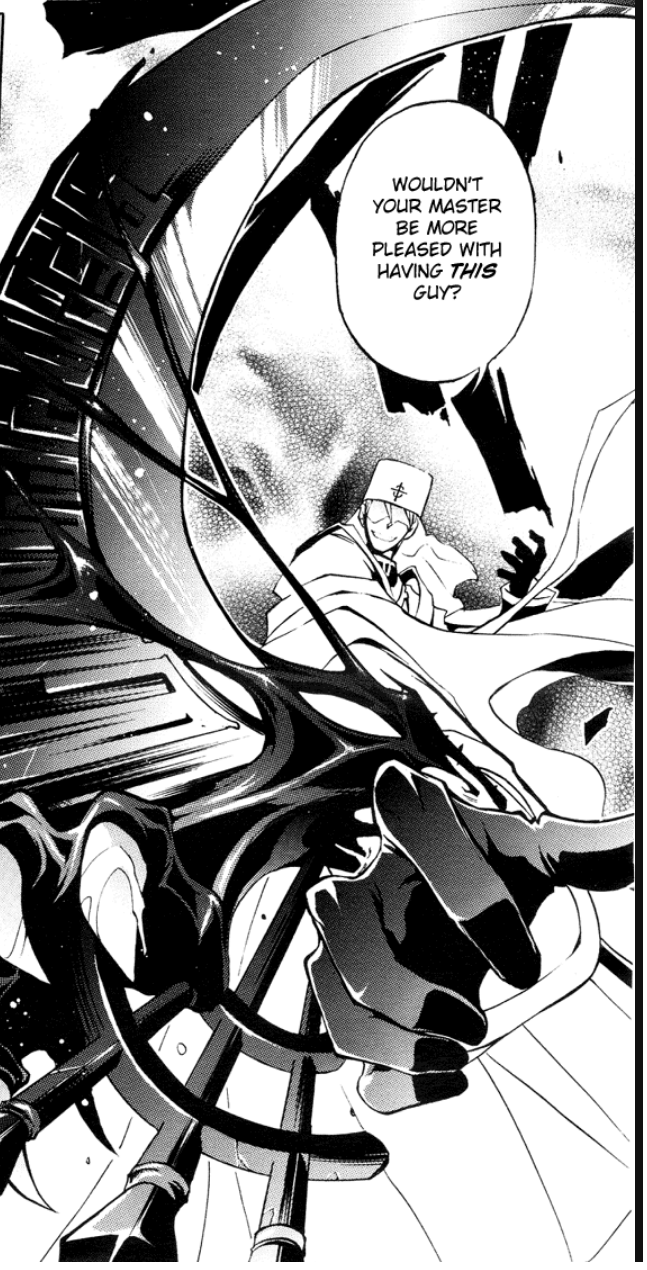
Oh, that's actually a sickle and Kor shits himself seeing it. Teito freaks out when he sees it too which surprises Frau, who is shocked that Teito can see it. Anyway, back to fucking up the old man. Frau drives him off, Labrador catches Teito when he falls out the window and Kor says he'll be keeping a soul as consolation. Castor says "Fuck that" and fucks him up with his thread that he uses for his puppet powers. Kor is pissed that he lost but he warns Frau that if that sickle is in use, the person that it belongs to is still alive. Frau says "Whatever" and cuts him in two.
Castor attends to Labrador, who apparently doesn't know what he was doing and Teito looks at them in awe, not knowing abilities like those existed. Frau strains to reabsorb the sickle back into his arm with Teito asking him if it hurts. Apparently, those who are marked by Kor are supposed to be mentally unstable afterwards but Teito's perfectly fine...he's a tough kid.

Teito asks what will happen to the old man. Frau says with his obsession killed off, he should be fine. Teito wonders why, with Frau sucking so much at bishoping, he cares about someone like him. He then asks that since the old man has no family, where is he going to stay? Frau calls him a softie. That causes Teito to throw a tantrum.

Castor says he can't believe a Kor showed up in the church. Labrador says the flowers are astir...
In the hospital on church grounds, Frau throws Teito onto a bed and orders him to take his clothes off.

Don't worry, he needs to get the mark off of him. But no one wants to see that so back to Ayanami. He still needs a begleiter. And other officers hate him because he's the least rich of the rich guys so naturally he shouldn't hold such a high position. They shut up when his unit walks in though. Ayanami meets up with Miroku to discuss Teito. Ayanami asks if Miroku wants him to get Teito back. Miroku says Teito is strong, the best student he had even.
So Teito has been at the church for two months now. He gets a letter (a map really) telling him to go to the courtyard. He likes the church; it's quiet, nice-looking and the nuns are nice to him (even if he doesn't like them touching his underwear). Frau makes fun of him for being short, Teito swings at him and falls into the pool where a doppelganger latches onto him. Because...that happens.
Nah, it's not a doppelganger. It's a girl Castor introduces as Razette. She's the church's organist who's a mermaid of Noel that's able to change her face. She likes Teito.

Teito hears the old man is doing better. Castor says when a person is given life from the Chief of Heavens, they are asked, "Because you are granted a human life, I will give you three dreams throughout your life. You may reply with three dreams that have risked your life. Now which dreams do you desire?" When all of your dreams that have been granted to you by the Chief has been accomplished, it is believed that your soul will be called back to the Chief. Of course, this all happens before you're born. Discovering what your dreams is the source of enjoyment and pleasure in life. Of course, there are evil beings who interfere with that. The Kor steal dreams and drag the human beings into darkness. Basically, if your first dream is granted through the Kor's power, your heart will never be satisfied no matter what you do. When the second wish is granted, you will drop into a state of starvation. And when your third wish is granted, the soul has indulged in too much darkness, and will never get to the Chief. The Kor will take that body to increase their number while waiting for Verloren's return.
The church's job is to protect people from the Kor but because there are so many cases, they have a Correction Center to help the people overcome the cases by themselves. Now about the bishops' abilities...it's not Zaiphon so what is it? Castor tells Teito to keep last night a secret instead of answering, then asking him if he wants to see Mikage. Teito agrees but then Castor (can't stay on one fucking subject, can he?) asks Teito what his dream is. He doesn't know...because the memory has literally been cut from him. If he had allowed the dead to touch him, he would have lost everything, not just his past. See, more than anything, the Chief of Heaven hates when his equilibrium is thrown off. Not just humans but even Kor are punished for messing with that. So why is Teito so important to the Kor that are making them overstep their boundaries?

The chapter ends with Teito visiting Mikage while Frau tells someone not to eat Teito (?!) and Ayanami assures that he has already started on the Teito problem...while we close on Teito visiting Mikage in his room.

0 notes
Text



“Gabrielle’s Oboe”
This was no ordinary
Town-Hall Organ concert…
the customary allocated hour was exhausted
the eclectic repertoire of organ and oboe
all but complete….then
Soloist Celia Craig
unexpectedly…
stepped forward with an encore suggestion…
an Impromptu, but welcome personal favourite of mine
from the ‘Mission” soundtrack collection.
The neo-classical grandeur of Town Hall
architecture formed a fitting back-cloth
to such a classic rendition of a
mellow sublime oboe solo. *1
It’s lofty columned structure ,absorbed the
hauntingly beautiful notes which echoed
In its rafters…Vintage Ennio Morricone… *2
and such a pleasant surprise!
We couldn’t believe either our “ears”
or the performance with our “eyes.”
An unusual, some might say, eccentric “pairing,”
the electronic power and might of
A four manual multi-stopped
Cathedral-style organ,
backing a diminutive oboe but to such emotional effect.
Ranking as one of the very best concerts
Thomas Trotter supported this *3
virtuoso solo performance delivering
an experience of beauty, and at times, ethereally
harmonious relaxation.
*1. ‘Gabrielle’s Oboe’ by Ennis Moriconi
https://m.youtube.com/watch?v=Ixby9BzJfEo&vidve=5727&autoplay=1
*2 Ennio Morticone :Composer of Gabrielle’s Oboe.
*3. Birmingham City Organist since 1983
G.P.S. 5th June 2023
(Pictures belong to the rightful owner.)
0 notes
Photo
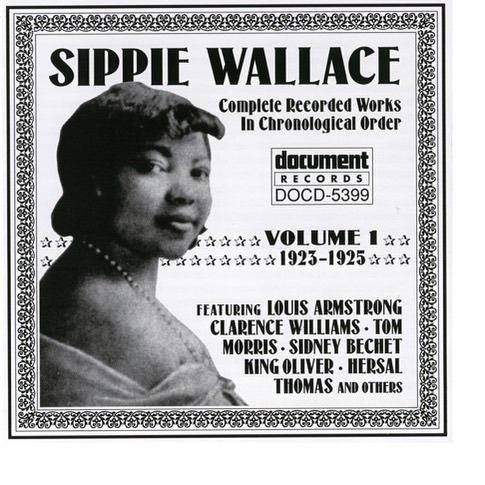
Sippie Wallace (born Beulah Belle Thomas, (November 1, 1898 – November 1, 1986) was a singer-songwriter. Her early career in tent shows gained her the billing "The Texas Nightingale". Between 1923 and 1927, she recorded over 40 songs for Okeh Records, many written by her or her brothers, George, and Hersal Thomas. Her accompanists included Louis Armstrong, Johnny Dodds, Sidney Bechet, King Oliver, and Clarence Williams. Among the top female blues vocalists of her era, Wallace ranked with Ma Rainey, Ida Cox, Alberta Hunter, and Bessie Smith. In the 1930s, she left show business to become a church organist, singer, and choir director in Detroit and performed secular music only sporadically until the 1960s, when she resumed her performing career. She was nominated for a Grammy Award in 1982 and was inducted into the Michigan Women's Hall of Fame in 1993. #africanhistory365 #africanexcellence https://www.instagram.com/p/CkagYmbOmNM/?igshid=NGJjMDIxMWI=
0 notes
Text
Accompanist positions

#ACCOMPANIST POSITIONS FREE#
Significant contribution to the Christian worship services and the overall musical life of the church.Īpplications: Candidates should email a resume and cover letter to Cheryl Stephenson, Director of Position requires a minimum of 8 to 10 hours per week on average. Procedures, including a Safe Sanctuaries background check. Adhere to all local United Methodist Church policies and Accompany all choirsĪnd assist with other related duties as assigned. Weddings, funerals, special seasons of the church year, and other events as needed. Provide organ and piano music for all traditional worship services and other church functions including Service, as we worship Jesus Christ through uplifting music that empowers the gifts of the laity in the Principal focus is to accompany the choir and congregation at the weekly 11:00 a.m. The Jarvis Memorial UMC Organist/Accompanist is the primary organist/accompanist for the church. survey and is one of the fastest growing cities in NC. Greenville is also ranked as the 10 th best place to live in the US based on a 2019 Medical Center (serving 29 counties in eastern NC) and a wide range of industries from pharmaceutical Vibrant, growing city with nearby East Carolina University the headquarters for Vidant Health and Jarvis Memorial United Methodist Church, located in beautiful downtown Greenville, NC, isĪccepting applications for the position of Church Organist/Accompanist (part-time).
#ACCOMPANIST POSITIONS FREE#
Applications: Candidates should email a resume and cover letter to Cheryl Stephenson, Director of Music Ministries, at Please feel free to email any questions or clarifications you may have regarding the position.

0 notes
Photo

I've watched for days as others have tuned a pipe organ. Of course, the size of the organ plays a big part in how long it takes and that was a rather large organ, but it is still a process, much like for a piano. Play a note that you want to work on, tweak it (initially with a tunig fork), play the previous note, next note, back and forth, do they play together or were you just a few microns off. Back and forth through all the pipes. Every single one. And then the temperature of the room change and throws everything off. A process indeed. I will say that I like various types of music, but I do like a pipe organ played well as one of them. Such as Bach's Taccota and Fugue in D minor. The organist and instrument can bring a room alive with the music and on some occassions has given me shivers. And the ranks of ever so slightly different pipes has its own beauty - all that shiny metal or wood. I've always found it fascinating. And so while working on a job some months ago, during a break I grabbed my camera and snapped a pic or two and now I share one with you. . Nov 2021 . Follow just my nature pics, at @DSK.Views.Nature Follow just my travel pics, at @DSKwanders Those pics plus more are also shown on @dskImages . Nikon D610, f/5.6, 1/160s, ISO-6400, 120mm, Nikkor 24-120mm, 3.5-5.6 ED AF Adobe Lightroom enhancements . #DSKImagesNW #mydailypic #mydailyphoto #myphotooftheday #mypicoftheday #InstaDaily #InstaPic #myshots #myphotography #PicoftheDay #PhotooftheDay #PhotographyDaily #BestoftheDay #thingsISee #thethingsiveseen #perspective #myofficeview #throughmylens #PhotoAddict #InstaPhoto #JustGoShoot #InstaFocus #Snapshot #whatISee https://www.instagram.com/p/CebQ976ujp5/?igshid=NGJjMDIxMWI=
#dskimagesnw#mydailypic#mydailyphoto#myphotooftheday#mypicoftheday#instadaily#instapic#myshots#myphotography#picoftheday#photooftheday#photographydaily#bestoftheday#thingsisee#thethingsiveseen#perspective#myofficeview#throughmylens#photoaddict#instaphoto#justgoshoot#instafocus#snapshot#whatisee
0 notes
Photo
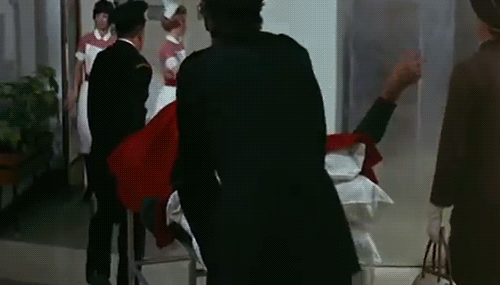
Carry On Doctor
Gerald Thomas
UK, 1967
16 notes
·
View notes
Photo
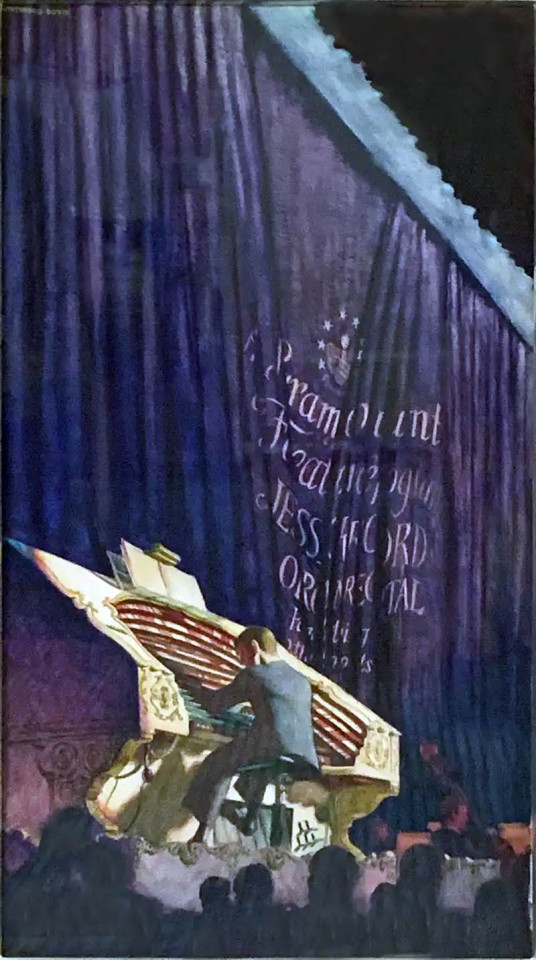
John Rutherford Boyd, Jesse Crawford at the Paramount Theater Organ, 1930s. Watercolor on paper.
Jesse Crawford was one of America's most famous theater organists of the 1920s and 1930s. In this painting, Crawford is playing the magnificent 36-rank Wurlitzer pipe organ in the Times Square Paramount. The curtain behind him announces, "Paramount Feature Program Jesse Crawford Organ Recital." Crawford played there from 1926 to 1933.
Photo: 1st Dibs
#New York#NYC#vintage New York#1930s#John Rutherford Boyd#painting#Jesse Crawford#movie theater#Paramount Theater#organ#theater organ
19 notes
·
View notes
Text
My Top 10 (current) Villain Crushes (male)
#10. Greed/Ling Yao from Fullmetal Alchemist: Brotherhood

OK Greed is about as nice a character as you can get and still technically be a villain. But hey, still part of the Homunculi, still kidnapped Alphonse. Definitely the sexiest and coolest of the Humunculi. Arguably the best character in FMA, and that’s no mean feat. Especially when he’s possessing Ling, who is already a hot anti-hero.
#9. Obito Uchiha from Naruto

Naruto is chock full of pretty boy villains. Like, literally every single one of them. But Obito really takes the cake for both pretty and tragic/lovable. He’s the perfect villainous foil to the protagonist, and also super shippable with Best Boy Kakashi due to the whole “used to be his friend” thing.
#8. Norman Bates from Psycho (1960)
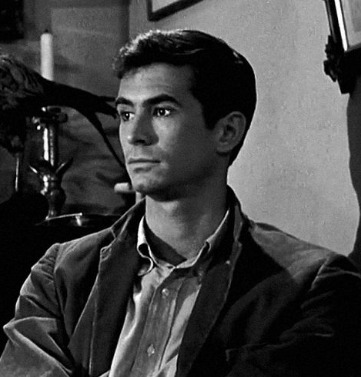
My first ever villain crush - actually my first movie character crush in general. Interestingly, Hitchcock deliberately made sure audiences would have this reaction by casting handsome rom com leading man Anthony Perkins to give the performance of a lifetime as the broken serial killer.
#7. Harvey Dent/Two Face from Batman

Batman villains definitely have a massive following for their sex appeal. Harvey/Two Face has always been my personal crush out of the group. I’m actually really partial to both Comics!Harvey and 1990s Animated Series Harvey, though Dark Knight Harvey is certainly handsome too. I love me some half-faced, conflicted split personality villains.
#6. Spike (and Angelus) from Buffy

Buffy has some of the sexiest villains ever, both male and female. Angel is mostly a hero throughout the series, and his villain counterpart is hot but also really evil. Spike is a bit more redeemable, dumbass writing choices in Season 6 aside. Spike is another villain who is just made by the actor’s performance. James Marsters (who also plays crush-able villains as Brainiac and even live-action Piccolo in that terrible movie) just makes him.
#5. The Phantom of the Opera/Erik

Yes, I too had a Phantom Phase. Most (straight) girls do. And I think we can all connect to being isolated organists dwelling in the Opera basement these days. I’ve seen every Phantom film and three different actor performances of the stage play. I’d say the appeal rankings are something like this: Phantom ’98, Phantom ’89, Phantom ’04, Phantom of the Paradise, Phantom ’25, Phantom ’43, Phantom ’62 (hammer), Michael Crawford, Ramin Karimloo
#4. Dabi/(SPOILERS) Toya Todoroki from My Hero Academia

I mean, I always noticed he was hot, but I didn’t develop a hardcore crush on him until these recent chapters. But hey, come in swinging with a gleeful dance as you reveal you’re secretly the tragic long lost brother of Human Cinnamon Roll Shoto? Spilling your whole tragic backstory while shirtless over the air? Pleading for understanding while showing us all your cute baby pictures? Yeah, that’ll do it.
#3. Loki from MCU

Yep, every (straight) girl also has a Loki phase. Specifically of course Tom Hiddleston’s Loki from the MCU. Doesn’t need much explanation. The good looks, swagger, badassery, and for me especially the dorky hilarious comedy (I love me some funny trickster villains); the eventually redeemable nature. The guy’s just a magnetic, impossible to hate and inherently lovable baddie.
#2. Zuko from ATLA

Duh. Though admittedly Zuko is a lot sexier when he redeems himself and goes all adorably dorky in Season 3. Though Part 1 Season 3 is Zuko at his most evil and antagonistic and also at his second most sexy, so they count. The lovable, best redemption arc ever having, tragically sympathetic and victimized Deuteragonist of ATLA is a big part of the reason why ATLA works as well as it does. Great character and irresistibly hot.
Hon mentions: Ulquiorra Cifer from Bleach (he might make the official list once I get to know him better), Sylar from Heroes (trashy show but almost worth it for Sylar), Amon/Noatak from Korra (the reason I started watching LOK), the Once Ler (yes I was one of those) Luke Castellan from Percy Jackson (best homme fatale) , Sasori from Naruto (not terribly complex but sexy as hell), the Count of Monte Cristo (best villain protagonist), Michael Myers (the prettiest slasher villain)
#1. Vegeta from Dragon Ball Z

There might some day be a sexier villain that Vegeta. It’s conceivable. But I doubt it. The Saiyan prince turned servant of Frieza, the truly unstoppable villain of the first arc of DBZ; the best redemption arc in the series (aside maybe Android 18), the future DBZ Best Boy who goes from caring only about power to fighting to protect wife and kids to the death…and of course the deep, throaty voice, skintight spandex, Saiyan physique and cocky smirk don’t hurt him any.
#top 10 list#hottest characters#greed fma#obito uchiha#norman bates#harvey dent#spike bts#the phantom of the opera#dabi#loki#zuko#vegeta#bnha spoilers#naruto#psycho#batman#Buffy The Vampire Slayer#my hero academia#mcu#Avatar The Last Airbender#dragon ball z#i clearly have a thing for dark hair
35 notes
·
View notes
Text
The Artwoods Story




The Artwoods’ 100 Oxford Street is a UK compilation album released in 1983 that features a four-page booklet (pictured above) that tells the band’s story, written by guitarist Derek Griffiths.
Since there's a limit on the number of photos that can be added to one post, I'll be reblogging this a couple times until I have all the info up. To see this post with all the info added in reblogs, click here.
Thanks for reading, and I hope you enjoy Derek’s words as much as I do!
Transcript under the cut (main text + Record Mirror article from page three's rightmost side)
“ It's difficult to pinpoint exactly when the Artwoods came into being because everything just seemed to evolve naturally. The one date however that does stick in my mind is the 1st October 1964 which is the date I turned professional, thus depriving the accountancy profession of a valuable addition to its ranks! But seriously, one must go back to previous events in order to trace the history of the group.
I first met Jon Lord at a party in West Hampstead when he was a drama student at The Central School of Speech & Drama. He was introduced to me by Don Wilson whose claim to fame was his membership of the famous skiffle group Dickie Bishop & His Sidekicks. They had had a hit years previously with "No Other Baby But You", and Don now ran a band on a semi-pro basis called Red Bludd's Bluesicians in which I played guitar. Well, I say we were called this, but only when we were fortunate enough to cop an R&B gig. We used to play The Flamingo Allnighter and lots of U.S. air bases. The rest of the time we played weddings and tennis club dances as The Don Wilson Quartet! Jon Lord was brought in on piano and was a very valuable addition especially as he could get his hands around a little jazz and all the old standards. Jon used to ring me at work and interrupt my vouching of sales ledger invoices in order to discuss the coming weekends gigs. We would bubble with excitement at the approach of an R&B gig as we really hated all the weddings and barmitzvahs.
Around this time Don made a very important policy decision and we suddenly became the proud owners of a Lowrey Holiday organ for Jon to play. Shortly after this Don contrived to drive the band-wagon into the back of a lorry on the North Circular, doing himself considerable mischief in the process. This brought about the unfortunate end of Don's career with us, but not before he had masterminded an important merger of two local bands.
For some time we had been aware, and not a little envious, of The Art Wood Combo led by none other than Art Wood himself. His band underwent a split at that time and Red Bludd's Bluesicians, alias The Don Wilson Quartet, were neatly grafted on. We really felt we were moving into the big league by doing this as Art not only had more work than us but, wait for it, used to sing with Alexis Korner's Blues Incorporated with Charlie Watts on drums and Cyril Davies on harmonica! The next problem was a replacement for Don, and this was solved by stealing the bass player from another local group The Roadrunners, a good looking cove who went by the name of Malcolm Pool. The offer and acceptance of the gig were transacted in a pub car park somewhere in West Drayton staring into the murky waters of the Grand Union Canal clutching pints of local bitter (Fullers?). (Authors note: drugs had not been invented at this stage, as far as most groups were concerned, apart from the odd pill to keep one awake on an all nighter!)
~
The next personnel change took place some time in 1964 and this involved the retirement of drummer Reg Dunnage, who did not want to turn pro. Auditions were held in London and lots of drummers attended. However it was more or less a foregone conclusion that Keef Hartley would get the job. You see we'd already decided that what The Artwoods needed above all else was a Liverpool drummer! Unfortunately none came to the audition, but Keef hailed from Preston which was near enough for us. Keef had previously played with Rory Storm & The Hurricanes, replacing Ringo Starr in the process (heady stuff this), and Freddy Starr & The Midnighters. Both were such influential bands of their time that these credentials combined with Keef's quasi Liverpool accent (at least to our ears) provided him with a faultless pedigree.
~
So that was it, the line-up that would take us through to 1967 when Colin Martin eventually replaced Keef Hartley on drums.
For a while we worked as The Art Wood Combo but then decided it was hipper to drop the Combo and become The Artwoods.
The period when The Artwoods were operating was one of musical change when groups went from recording and performing other writers' material to writing their own. In fact the last year of the group's existence was 1967 which heralded the arrival of "Hendrix", "Flower-Power". "Festivals" and experimental use of mind expanding drugs! 1966/67 were particularly exciting years to be based in London and every night would be spent in one of the many clubs which had recently sprung up. The Ad Lib, The Scotch of St. James, The Cromwellian, Blaises and of course The Speakeasy to mention a few. Many of these we played in and the trick was to be well known enough not to have to pay the entrance fee on nights off. Any night you could be sure to meet your mates "down The Speak" and it became the unofficial market place for rock musicians.
It was also the days before huge amounts of equipment took over. Equipment meant road-crew and trucks and in turn financial hardship. This simple equation has been the downfall of many bands over the years. We used to travel in a 15 cwt van together with all the gear-no roadies, just us. It's amusing to recall but after recording the TV show "Ready, Steady, Go" (in Kingsway in those days?) one would be besieged by autograph hunters on the way to the van with the gear. Even really 'big groups of the day like The Zombies would hump their own equipment and apologetically place an amp on the ground in order to sign an autograph! Because it was financially viable to travel to small clubs in this way, we would often average 6 or 7 nights a week, every week, on the road. A bad month would probably mean less than twenty gigs. This meant we were living, sleeping and eating in close, and I mean close, proximity. You really found out who your friends were.
The subject of equipment is an interesting one as it really distinguishes the bands then from those of today. The average pub band of today would carry more equipment than we did. As I've already mentioned we were quick to realise that we could elevate ourselves musically by investing in a proper electric organ as opposed to a Vox Continental or Farfisa that many groups used. Consequently the group purchased a Lowrey Holiday and we thought this alone would provide us with the Booker T and Jimmy Smith sound.
What we failed to realize was that we also needed a Leslie cabinet with a special built-in rotor to get that "wobbly" sound. Our friend and mentor Graham Bond, the legendary organist/saxophonist, was quick to point out the error of our ways one night when we were gigging at Klooks Kleek in West Hampstead. We groaned inwardly when we discovered the extra cost and humping involved, but it had to be bought. We were fortunate very early on to score a deal with Selmers, who provided us with free amps and P.A., but we had to make the trek to Theobalds Road once a week to get it all serviced as they were not as reliable in those days. I used a Selmer Zodiac 50 watt amp and Malcolm had Goliath bass cabinets with a stereo amp.
The P.A. comprised two 4 x 12 cabinets and a 100 watt amp! When we toured Poland we played in vast auditoria and linked our system with the Vox system being used on tour by Billy J Kramer & The Dakotas. This meant we were pumping out no more than 300 watts which is laughable by today's standards. Although it would never have compared in quality, I can remember standing at the back of extremely large halls and being able to hear clearly all the words Billy J sang. One day in 1963 Alexis Korner sent me off foraging in and around Charing Cross Road for a new guitar, with instructions to mention his name whereupon I would receive a discount of 10%. Previously I played a Burns Trisonic (collectors will appreciate this model did not have "Wild Dog" treble) but fancied owning a Gibson ES335 as favoured by many blues players. Sure enough one was hanging invitingly in the window of Lew Davis's shop.
I ended up paying £135 and still use it regularly today although its value has multiplied five fold. Malcolm came with me that day and bought an Epiphone bass, the same colour and shape as my guitar. For years we looked like matching book-ends on either end of the group! Keef started off using a Rodgers drum kit, but somewhere along the line changed to, I think, Ludwig. There was no out-front mixing as is common today, just the P.A. amp on stage with the vocalist. Primitive I know, but everything revolved around bands being able to travel economically with their gear and perform at small clubs anywhere in Britain. The college circuit was much sought after and provided the icing on the cake while package tours were not necessarily well paid. We did our first with P. J. Proby and got £25 per night (for the lot of us) and we had to pay for our own accommodation!
~
I have already mentioned "Ready, Steady, Go" a show on which we appeared on more than one occasion. The original format called for groups to mime to their records but after a time it was decided that it would become "live" and that the show would be re-titled "Ready Steady Goes Live". We were proud to be picked for the first "live" show and learnt the news via a telephone call to our agent in London from a phone box high in the Pennines. We managed a drunken war-dance of celebration round the phone box believing that this meant we'd really cracked it. As I remember the first show we did featured Tom Jones (complete with lucky rabbits foot) miming to "It's Not Unusual", The Kinks, Donovan and Adam Faith's Roulettes playing live (without Adam). We were promoting our first single "Sweet Mary" and I would put the date at around late 1964.
~
Our first recording deal was with a subsidiary of Southern Music Publishing called Iver Productions and I reckon that would have been mid 1964. Southern had a four track studio in the basement of their offices in Denmark Street ("The Street") and getting the gear downstairs, especially the organ, was "murder". Our first producer was Terry Kennedy and we recorded several tracks with him. Without going too deeply into all the details of recording techniques of the period, one tended to compensate for the lack of tracking facilities available, by attempting to duplicate the live excitement. In many ways it was a frustrating experience particularly for ambitious guitar-players. I was a Steve Cropper freak and I knew as a musician that a lot of his sound on record resulted from him working his amplifier hard in the studio— thus the speaker would emit the sound he was used to on stage. In Britain however, engineers would say "You don't need to play loud man, we can turn you up on the desk". The result was a weedy, thin guitar sound. From way back I'd been experimenting with "feed back" on stage and I really had to dig my heels in about the guitar sound in the studio. Once when I turned my amp up to give it a bit of "wellie" on a solo the engineer bounded out of the control room screaming that the level would bust his microphones!
~
Sometime during the career of The Artwoods it was decided that we should graduate to a better studio. This was arranged by Mike Vernon who also became our producer. Our records had all been released through the Decca Record Co. and Mike was a staff producer with them. Mike w also an authority on "The Blues" and the relationship led to our only single chart record "I Take What I Want" a cover of a Sam & Dave U.S. R&B hit. Mike was also producing John Mayall at the time and it seemed only natural that Mike and The Artwoods should team up. From this point on we recorded at the Decca studio in Broadhurst Gardens, West Hampstead, but I can't honestly say it did any more for us than our previous efforts in the Southern Music basement, although we could now indulge ourselves in the comparative luxury of the eight track studio. Later on, towards the end of the groups life we were signed by Jack Baverstock at Philips Records who was looking for a group to cash in on the thirties-style gangster craze which had been triggered off by the film "Bonnie & Clyde". As a result we changed our name to "St. Valentines Day Massacre" and released a single of the old Bing Crosby hit "Brother Can You Spare A Dime?" It was an ill- fated venture, which I would prefer not to dwell on, virtually signalling the end of the band apart from a few heavy-hearted gigs with a changed line-up.
~
Before that though, there were many great times to remember, and a fair number of gigs that were memorable in one way or another.
One of our favourite gigs was Eel Pie Island which we regularly played once a month; in fact we held the attendance record there for a while until the ageing blues artist Jesse Fuller took it from us. Eel Pie Island is literally an island in the middle of the River Thames at Twickenham and there's never been a gig like it since. It was an Edwardian ballroom originally I believe, that achieved notoriety in the 50's with the Trad Jazz boom. At that time, an overloaded chain ferry was used to convey the crowd across the river, but during the 60's a small bridge was in existence although it was only wide enough to take the promoter Art Chisnall's mini van. He had to make three separate trips across with the gear strapped to the roof and hanging out the back doors.
The audiences were exceptional for those times and I don't know where they all came from... very much like art students and very much more like the 70's than 60's. Long hair predominated and this was before 'hippies' had officially been invented! If you can imagine a ramshackle wooden ballroom, bursting at the seams, condensation pouring from the walls, the audience on each others shoulders leaping up and down, the sprung dance floor bending alarmingly in the middle, in the summer couples strolling outside and lounging on the river bank ... all this and not a disc jockey in sight! One other bonus was that it was a “free” house and therefore sold many different types of beer— we always favoured Newcastle Brown. Back on the 'mainland' afterwards it was always riotous packing the gear into the truck. I don't know how he managed it but one night Malcolm drove our truck over the support band's guitar which happened to be lying about, thus breaking the neck. I'll never forget the shocked look on that poor guitarist's face as Malcolm smoothly slipped the van into gear, apologised and drove off in that order!
~
No trip up north was complete without stopping at the famed Blue Boar on the M1 for a "grease-up" on the way home. I do not refer to truck lubrication but to a particular rock'n'roll delicacy known as “full-house”. This comprised double egg, sausage, chips, beans, tomatoes, fried slice, tea, and (if you were man enough) toast. It was considered a Herculean task to break successfully the 10 bob' (50p) barrier-all served on wobbly cardboard plates that doubled as items to sign autographs on for the self service waitresses.
Waitress: What band are you?
Me: You won't have heard of us.
Waitress: Oh go on, tell us.
Me: OK. The Artwoods.
Waitress: Never 'eard of you!
It was everybody’s dream to walk into the Blue Boar just as their hit of the moment was playing on the Juke Box.
~
One time we were chosen to represent the twentieth century at the centenary celebrations of the State of Monte Carlo— a most lavish affair which the aristocracy and dignatories of Europe attended. Princess Grace and Prince Ranier were the hosts and people like Gina Lollobrigida and the like were there. The ball was held in the famous Casino at Monte Carlo and we stayed in an opulent hotel called The Hermitage, I think. All I can remember is that we all had single rooms (a rare luxury) which were massive, and you could have pitched a tent under one of the bath towels, they were so big. After this we jetted off up to Paris where we played next door to the Moulin Rouge at a club called The Locomotive.
Whilst we were there we were taken out by our friend Mae Mercer, the American lady blues singer who we backed in England. She lived in Paris and took us out to Memphis Slim's club where we all set about drinking like it was going out of style. At the end there was an embarrassing scene concerning the bill with the result that Mae ended up in tears. Whilst we were bumbling about in an alcoholic stupor, an upright looking gentleman put his arm round Mae to comfort her and a wallet appeared magically from his inside pocket. Without further ado the bill was despatched and we later learned that our anonymous benefactor was none other than Peter O'Toole who was busy in the street outside filming 'Night Of The Generals' and was an old buddy of Mae's.
~
One Boxing Day we loaded up with turkey sandwiches and Xmas pudding and headed off for a gig down in Devon or Cornwall somewhere. We arrived to find the club closed and boarded up, and as usual we were broke. Naturally we were livid, checked into an hotel and located the promoter who lived with his mum. Next morning we drove round to where he lived and burst our way past his confused mum. We found him in his bedroom nervously cowering against some fruit machines which he collected. He had no money so we forced him to empty his damned machines with the result that we drove back to London with 50 quids' worth of 'tanners' (approx 22p for the younger reader!)
Whilst on the subject of disasters I suppose I am duty bound to mention Denmark. The first time we went there we caught the ferry to the continent, drove up through Germany, then caught another ferry to Denmark. There was no promoter to meet us when we arrived so all we could do was drive to Copenhagen and check in at the Grand Hotel. It cost us an arm and a leg but at least we got a good nights sleep after being awake for nearly two days travelling. The next day we made a few phone calls and finally tracked down the promoter. He said: "Didn't you get my telegram cancelling the tour?" We politely said no we hadn't and what did he intend doing with us? He checked us into another hotel (cheaper of course) and set about booking us at places that were similar to English coffee bars and youth clubs. We made enough to survive on and paved the way to more successful tours of that country. In fact by now we had Colin Martin on drums and were pursuing a much more adventurous musical policy and writing our own material. It was just right for Denmark who had taken Hendrix to their hearts to name but one, and we subsequently became quite big there in 1967.
The Artwoods achieved modest success-a minor hit single in "I Take What I Want", but we worked constantly, travelled abroad, had fantastic fun and made a living doing so. We had seven single releases, one album, and one EP, and we broadcast both on radio and TV many times. We did stage tours such as the P. J. Proby tour and covered most aspects of "show-biz" apart from actually making a movie. It was the era when bands still had to prove themselves as a live act before being offered a recording contract. now frequently happens of course that an act can become huge record sellers without so much as venturing to do a live gig.
~
So what happened to everyone? Well Art returned to his former occupation as a commercial artist and finds some time to fit in free-lance work between accompanying brother Ron Wood on raving excursions between Rolling Stones gigs. Malcolm moved into the same field as Art and they now work in the same building. Both of them gig occasionally on a semi-pro basis although Malcolm spent some time playing with Jon Hiseman's Colosseum and Don Partridge in the early 70's. Jon Lord became famous with Deep Purple and Whitesnake as did Keef Hartley with John Mayall and various bands of his own. Colin Martin is now a BBC Radio producer of repute. I played in various bands such as Lucas and The Mike Cotton Sound, Colin Blunstone's band, Dog Soldier (with Keef again), before I somehow drifted into studio and theatre work. Recently I formed an R'n'B band called the G.B. Blues Company, and it's great to be back on the road again. ”
Derek Griffiths.
Clipping from Record Mirror on June 5, 1965, by Norman Jopling.
“We aim to excite!” … say the Art Woods
Just for the record, the Art Woods aren't a part of Epping Forest. In fact they're a group of five interesting young men, named after the group's leader Art Wood. They also happen to be one of the most realistic groups on the scene.
For a start, they are the awkward position of having a large following, a club residency but no hit record. Secondly. they don't mind pandering to commercial tastes, even though they have been hailed as one of the most authentic R & B groups in the land.
NO PULL
“But authentic R&B just isn't pulling the crowds any more,” says Art. “The audiences want to be excited, not to be lectured on what is 'good' and what is 'bad'. Although there was a time when you could spend half an hour on one number with long solos by everybody, it didn't last long. And although there are some clubs like that still, most of them want something fresh and new.
“And we try to cater for them. We like authentic R&B, but we also like playing everything and anything else. So far, our two discs haven't meant a light. Of course we'd love a hit. But we're lucky enough to make a good living without one.”
DISCS
The Art Woods latest disc is "Oh My Love" and the one before that “Sweet Mary”. Of them Little Walter has said that he couldn't believe any white group could sing and play the blues like they do.
Line-up of the group is Art Wood, leader. vocalist and harmonica. Derek Griffiths, lead guitar, Jon Lord, organ and piano. Malcolm Pool— base guitar, and Keef Hartley on drums. The boys use a specially adapted Lowrie organ, and get a sound that's really different.
But even if the boys sometimes become depressed about no hits records, they should remember groups like Cliff Bennett, the Barron-Knights, the Rockin' Berries and the Yardbirds, and how long THEY waited before they had a hit!
N.J.
#the artwoods#the art woods#art wood#derek griffiths#malcolm pool#jon lord#keef hartley#colin martin#100 oxford street#the 100 club#articles#liner notes#newspaper clippings#record mirror#my posts
10 notes
·
View notes
Text

The Capitol Theatre opened December 10, 1928 with Colleen Moore & Gary Cooper in “Lilac Time” as part of the Kallet Theaters chain. It was designed by architect Leon H. Lempert, Jr. It was equipped with a Moller 3 manual 7 ranks organ which was opened by organist Robert S. Bancroft. It operated as a first run movie house until the 1970’s, when it closed.
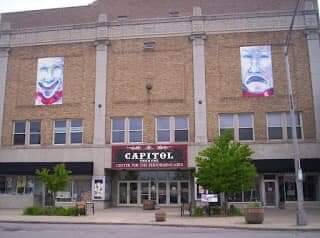
In 1985 the Capitol Theatre re-opened as a civic center. Recently, the original installation Moller theatre organ was returned to working condition.



2 notes
·
View notes